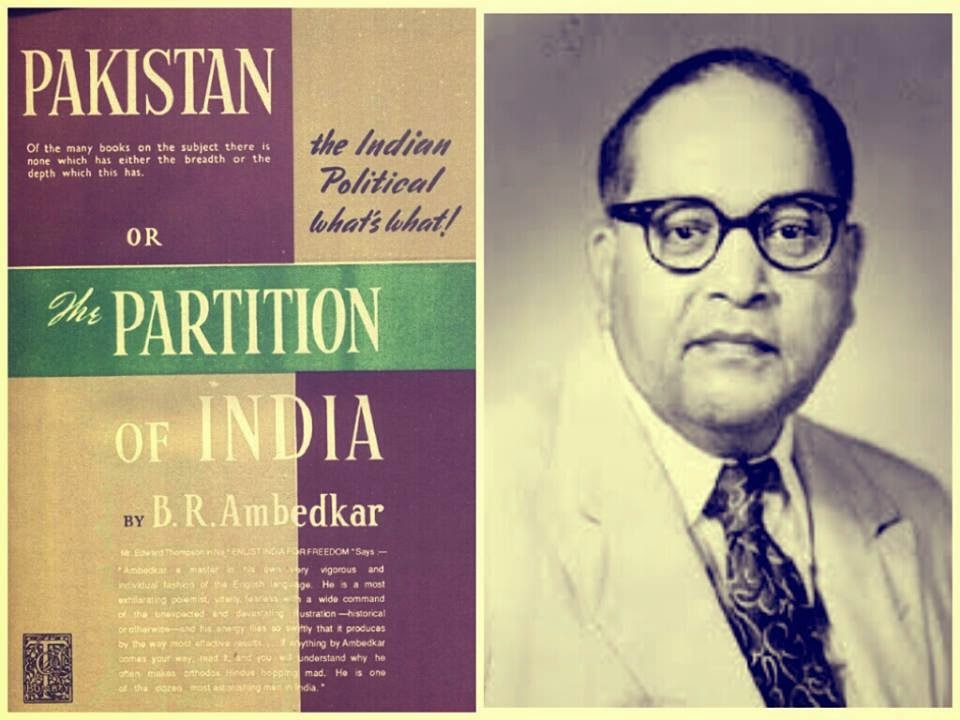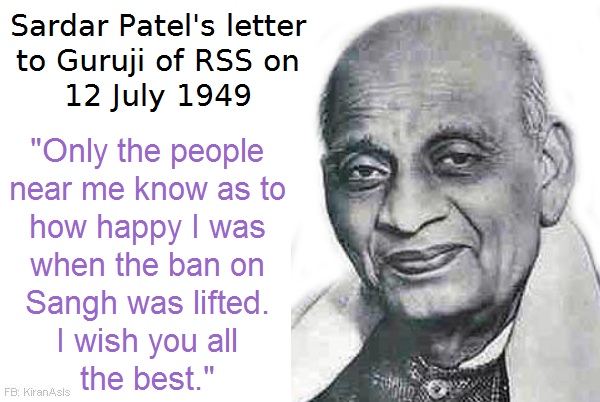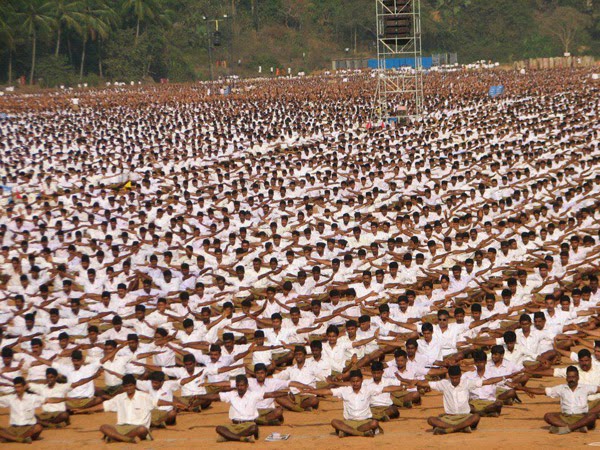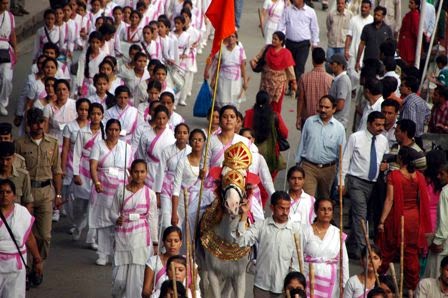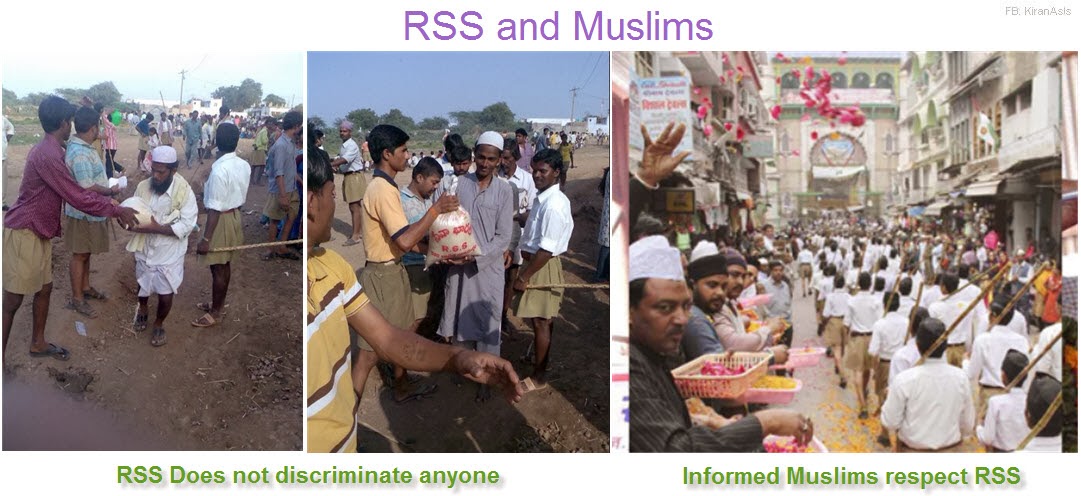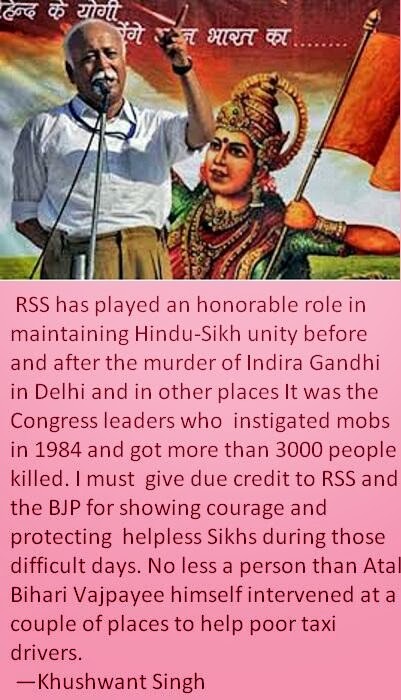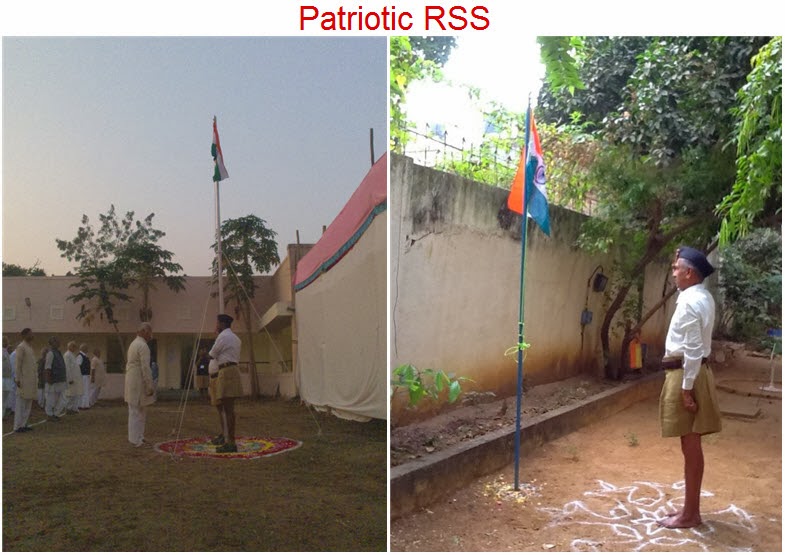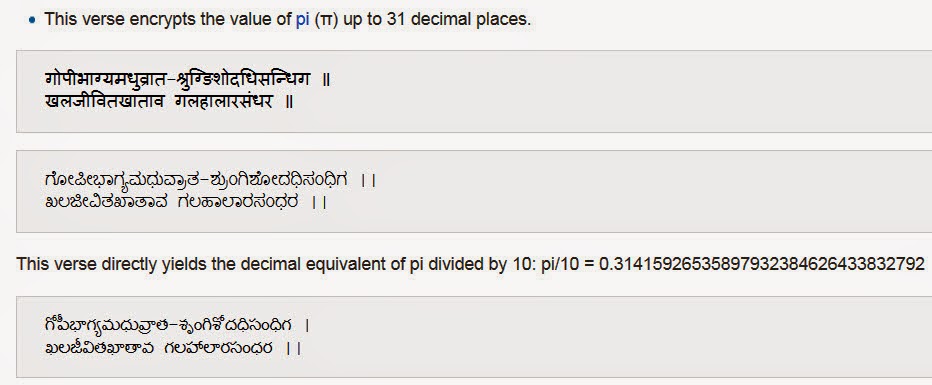Dr. Bhimrao Ramji Ambedkar is a tall figure of 20th century Indian history. Popularly known as Babasaheb, the details about his careers as a lawyer, politician, constitution framer, social reformer and an economist are well known. He's an inspiration to crores of young Indians today of various classes and ideologies.
But there are ten snippets about this famous man, that are not quite highlighted. Time to take a look at them. I will provide references for each as to where I learned about them, and if any of them need correction or contention, please post comments with authentic references.
1: Dr. Ambedkar stood for Sanskrit as the official language of India.
This is not a well known fact, but it is a fact. In 2005, this was revealed by Chamu Krishna Shastry, a well known Sanskrit proponent in India.
It is anyone's guess as to who might have exerted " political pressure" on Ambedkar in 1949 to withdraw that historic resolution, which could have changed India in an different direction. Ambedkar's strong support to Sanskrit is something to ponder upon, for those who consider Sanskrit as an "Aryan" language of upper castes, that should not be supported.
2: Ambedkar is actually a Hindu Brahmin surname.
Bhimrao's original surname was Ambavadekar. It comes from his family's native village name in Ratnagiri district of Maharashtra, even though he was born in today's Madhya Pradesh region. In Marathi, it is a common practice to add "kar" to the village name as the surname.
In this writeup in the Outlook, Smruti Koppikar describes how his favourite Hindu Brahmin teacher, Mahadev Ambedkar, changed his surname from 'Ambavadekar' to his own surname 'Ambedkar' in the school records. The respect Bhimrao had for his teacher Mahadev, ensured that his borrowed surname continued for rest of his life! It tells us that Bhimrao respected all castes - his fight was against caste discrimination, and not Hinduism or any particular caste.
Reference: Bhimrao Sakpal Ambavadekar became Bhimrao Ambedkar
3. Ambedkar's father was a Vegetarian.
This one really surprised me. In the recent days, whenever there's a protest against ban on cow slaughter, you will invariably see an Ambedkar picture and beef eating "ceremonies".
But after reading Vikram Doctor's blog on the Economic Times, I stumbled upon two surprising details.
Reference: The Dalit Meanings of Food
4. Nehru prevented Ambedkar from entering Lok Sabha. Jan Sangh got him to Rajya Sabha.
Ambedkar contested Lok Sabha election twice. Both times Nehru's Congress made sure that he was defeated. Babasaheb Ambedkar contested from Bombay North in the first Indian General Election in 1952 but lost to the Congress candidates Narayan Kajrolkar, who had been his assistant once. He tried to enter Lok Sabha again in 1954 when he contested the by-election from Bhandara but he was placed third in the ballot won by Congress.
Reference: Babasaheb was close to Jan Sangh, says BJP
5. Bhimrao's second wife was a Hindu Brahmin.
Ambedkar met Dr. Sharada Kabir, a Saraswat Brahmin, when he needed medical treatment in the late 1940s. He married her on 15 April 1948, at his home in New Delhi. His first wife had passed away a decade ago. Doctors recommended that he needed a companion who was both a good cook and a possessor of medical knowledge and could thus take care of him. She adopted the name Savita Ambedkar and took care of him for the rest of his life.
It is unfortunate that any political or NGO conversations regarding Ambedkar quickly turn into anti-Brahmin mode, when his borrowed surname is that of a Brahmin and his wife who served him during most needy years, was a Brahmin woman.
6. Ambedkar was not against Hindutva or RSS.
Ambedkar actually claimed Hindutva for the Dalits (untouchables or depressed classes) in 1927.
He also also praised Hindutva ideologue Veer Savarkar's efforts to eradicate caste discrimination in his Janata paper in 1933.
When some Dalit youth were supporting the anti-India Razakars of Hyderabad after independence, Ambedkar told them not to take that path:
If you read Ambedkar's book, chapter 10, you would start seeing his absolutely rational arguments condemning the evils of Muslim society in pre-partitioned India.
Read chapter 10 for instance which has a sub title ;- Muslim Society is even more full of social evils than Hindu Society is.
Ambedkar opposed Article 370 in the Constitution, which gives a special status to the State of Jammu and Kashmir, and it was put against his wishes. Balraj Madhok reportedly said, Ambedkar had clearly told Sheikh Abdullah:-
9. Ambedkar was a confirmed enemy of Communists, in his own words!
Read this excerpt from a book on India.
10. Ambedkar warned India against China's aggression on Tibet and beyond.
The Time issue dated October 22, 1951, noted:
Hope you gained some insight after reading these today. Anything else you want to share in comments?
But there are ten snippets about this famous man, that are not quite highlighted. Time to take a look at them. I will provide references for each as to where I learned about them, and if any of them need correction or contention, please post comments with authentic references.
1: Dr. Ambedkar stood for Sanskrit as the official language of India.
This is not a well known fact, but it is a fact. In 2005, this was revealed by Chamu Krishna Shastry, a well known Sanskrit proponent in India.
"Dr Ambedkar himself wanted to sponsor Sanskrit as the official language of the Indian union along with his supporters Dr BV Keskar, deputy minister for external affairs, and Naziruddin Ahmed. He moved an amendment draft on September 10, 1949. The resolution had to be withdrawn due to political pressure."Reference: Ambedkar wanted Sanskrit as official language
It is anyone's guess as to who might have exerted " political pressure" on Ambedkar in 1949 to withdraw that historic resolution, which could have changed India in an different direction. Ambedkar's strong support to Sanskrit is something to ponder upon, for those who consider Sanskrit as an "Aryan" language of upper castes, that should not be supported.
2: Ambedkar is actually a Hindu Brahmin surname.
 |
| Image from Wiki |
Bhimrao's original surname was Ambavadekar. It comes from his family's native village name in Ratnagiri district of Maharashtra, even though he was born in today's Madhya Pradesh region. In Marathi, it is a common practice to add "kar" to the village name as the surname.
In this writeup in the Outlook, Smruti Koppikar describes how his favourite Hindu Brahmin teacher, Mahadev Ambedkar, changed his surname from 'Ambavadekar' to his own surname 'Ambedkar' in the school records. The respect Bhimrao had for his teacher Mahadev, ensured that his borrowed surname continued for rest of his life! It tells us that Bhimrao respected all castes - his fight was against caste discrimination, and not Hinduism or any particular caste.
Reference: Bhimrao Sakpal Ambavadekar became Bhimrao Ambedkar
3. Ambedkar's father was a Vegetarian.
This one really surprised me. In the recent days, whenever there's a protest against ban on cow slaughter, you will invariably see an Ambedkar picture and beef eating "ceremonies".
But after reading Vikram Doctor's blog on the Economic Times, I stumbled upon two surprising details.
"Nor is it correct to equate all upper-castes with vegetarianism and all Dalits with eating meat – Dr.Ambedkar’s father, for example, was vegetarian."
"I’m not sure if Dr.Ambedkar became vegetarian when he converted to Buddhism – Keer’s book doesn’t seem to make this clear and there is a surprising lack of other biographical material."It looks like being a Kabir Panthi, Ambedkar's father Ramji was certainly a vegetarian and teetotaler. It also kind of implies that Babasaheb might have become a vegetarian coming from that family and also a vegetarian during the later part of his life. Something that needs a bit more research. And those who follow Ambedkar's path, this is something critical to ask - why was his father and (likely) himself vegetarian?
Reference: The Dalit Meanings of Food
4. Nehru prevented Ambedkar from entering Lok Sabha. Jan Sangh got him to Rajya Sabha.
Ambedkar contested Lok Sabha election twice. Both times Nehru's Congress made sure that he was defeated. Babasaheb Ambedkar contested from Bombay North in the first Indian General Election in 1952 but lost to the Congress candidates Narayan Kajrolkar, who had been his assistant once. He tried to enter Lok Sabha again in 1954 when he contested the by-election from Bhandara but he was placed third in the ballot won by Congress.
"In 1952, the Congress defeated Ambedkar in the parliamentary seat of Dadar in Bombay. It is strange that Jawaharlal Nehru did the sin of campaigning against Ambedkar during the elections.”
"The reason behind this was the Congress mentality of devaluing him. Later, the role played by Jan Sangh in getting him elected for Rajya Sabha from West Bengal is not hidden from anybody,” - Arvind Menon, BJP.So much for "love" of Ambedkar by Congress party.
Reference: Babasaheb was close to Jan Sangh, says BJP
5. Bhimrao's second wife was a Hindu Brahmin.
Ambedkar met Dr. Sharada Kabir, a Saraswat Brahmin, when he needed medical treatment in the late 1940s. He married her on 15 April 1948, at his home in New Delhi. His first wife had passed away a decade ago. Doctors recommended that he needed a companion who was both a good cook and a possessor of medical knowledge and could thus take care of him. She adopted the name Savita Ambedkar and took care of him for the rest of his life.
 |
| Pic: photobucket |
6. Ambedkar was not against Hindutva or RSS.
Ambedkar actually claimed Hindutva for the Dalits (untouchables or depressed classes) in 1927.
"Hindutva belongs as much to untouchable Hindus as to the touchable Hindus. The temples must be open for all. Efforts were made for the growth of Hindutva by Brahmins like Vasishta, Kshatriyas like Krishna, Vaishyas like Harsha and Shudras like Tukaram. The same amount of efforts for Hindutva were pitched in by untouchables (Dalits) like Valmiki (of Ramayana), Drishthara of Vyadha Gita, Chhokamela and Rohidasa. We have brave Sidnak Mahar kind of untouchable who fought for protection of Hindutva. Both touchable and untouchable Hindus have served the Hindu temples built in the names of Hindutva. So everyone has the right to enter them."
He also also praised Hindutva ideologue Veer Savarkar's efforts to eradicate caste discrimination in his Janata paper in 1933.
"Savarkar's efforts to uplift Dalits are as noble and effective as Gautama Buddha's"Ambedkar even visited RSS camp and praised them.
"Ever conscious of Hindu movements supporting Sanghatan – social solidarity, Dr.Ambedkar visited RSS camp in Pune in May 1939. He expressed his satisfaction: “I am surprised to find Swayamsevaks here moving about in absolute equality and brotherhood without even caring to know the castes of others."References:
- Essays on Dalits book by Raj Kumar, page 72.
- Kannada Prabha 14-Apr-2015 page 7, by Tejasvi Surya. Need to save Ambedkar from pseudos
- Bodhi Sattva’s Hindutva: Part 4 by Aravindan Neelakandan.
When some Dalit youth were supporting the anti-India Razakars of Hyderabad after independence, Ambedkar told them not to take that path:
"Hyderabad state's scheduled castes must not support the Nizam or Ittehad-ul-Muslimeen under any circumstance. No scheduled caste member should join hands with anti India forces, bringing disrepute to their castes"
If you read Ambedkar's book, chapter 10, you would start seeing his absolutely rational arguments condemning the evils of Muslim society in pre-partitioned India.
Read chapter 10 for instance which has a sub title ;- Muslim Society is even more full of social evils than Hindu Society is.
"the Muslim woman is the most helpless person in the world."
"No words can adequately express the great and many evils of polygamy and concubinage, and especially as a source of misery to a Muslim woman. It is true that because polygamy and concubinage are sanctioned, one must not suppose they are indulged in by the generality of Muslims; still the fact remains that they are privileges which are easy for a Muslim to abuse to the misery and unhappiness of his wife."
"Take the caste system. Islam speaks of brotherhood. Everybody infers that Islam must be free from slavery and caste. Regarding slavery nothing needs to be said. It stands abolished now by law. But while it existed, much of its support was derived from Islam and Islamic countries.While the prescriptions by the Prophet regarding the just and humane treatment of slaves contained in the Koran are praiseworthy, there is nothing whatever in Islam that lends support to the abolition of this curse..... But if slavery has gone, caste among Musalmans has remained. As an illustration one may take the conditions prevalent among the Bengal Muslims."
"There can thus be no manner of doubt that the Muslim Society in India is afflicted by the same social evils as afflict the Hindu Society. Indeed, the Muslims have all the social evils of the Hindus and something more. That something more is the compulsory system of purdah for Muslim women."Regarding Pakistan, if you read the Chapter 14 of the same book, you can clearly see that he wanted transfer of Muslims to Pakistan (east and West) with non Muslims back to India from there.
What about its workability? The scheme is not new. It has been tried and found workable. It was put into effect after the last European War, to bring about a transferof population between Greece and Bulgaria and Turkey and Greece. Nobody can deny that it has worked, has been tried and found workable. The scheme I have outlined is a copy of the same scheme. It had the effect of bringing about a transfer of population between Greece and Bulgaria and Turkey and Greece. Nobody can deny that it was [=has] worked with signal success. What succeeded elsewhere may well be expected to succeed in India.The most recent Organiser special edition on Ambedkar notes his view about Christianity and Islam, and conversion in general:
Ambedkar was against Dalits converting to Christianity or Islam because he believed that “if the numbers of Muslims and Christians rise and it will cause danger to India.”References:
- Kannada Prabha 14-Apr-2015 page 7, by Tejasvi Surya. Need to save Ambedkar from pseudos
- Book: Pakistan or the Partition of India by BR Ambedkar - Chapter 10 and Chapter 14.
- Ambedkar a pioneer like Savarkar, Malviya: RSS.
Ambedkar opposed Article 370 in the Constitution, which gives a special status to the State of Jammu and Kashmir, and it was put against his wishes. Balraj Madhok reportedly said, Ambedkar had clearly told Sheikh Abdullah:-
"You wish India should protect your borders, she should build roads in your area, she should supply you food grains, and Kashmir should get equal status as India. But Government of India should have only limited powers and Indian people should have no rights in Kashmir. To give consent to this proposal, would be a treacherous thing against the interests of India and I, as the Law Minister of India, will never do it."Reference: Kashmir problem from Ambedkarite Perspective, by K Jamanadas.
9. Ambedkar was a confirmed enemy of Communists, in his own words!
Read this excerpt from a book on India.
In another context, presiding over a District conference of the Depressed Classes at Masur in September 1937, Ambedkar declared that he was a confirmed enemy of the Communists who exploited the labourers for their political ends, and there was no possibility of joining them.Reference: Book Perfidies of Power: India in the New Millennium, by P Radhakrishnan, page 54.
10. Ambedkar warned India against China's aggression on Tibet and beyond.
The Time issue dated October 22, 1951, noted:
“Ambedkar is the first important Indian official who has openly attacked Nehru for being too friendly to China and not friendly enough to the US”.On China he disagreed with the Tibet policy and the enunciation of Panchsheel. He said:-
“If Mao had any faith in the Panchsheel, he certainly would treat the Buddhist in his own country in a very different way. There is no room for Panchsheel in politics”.Reference: Ambedkar’s views on foreign policy, by Harish Parvathaneni
Hope you gained some insight after reading these today. Anything else you want to share in comments?



